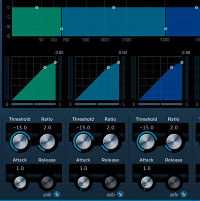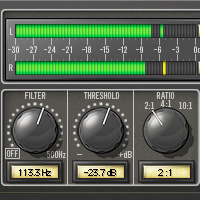Mastering is a large and tricky topic. Many opt to hire a professional mastering engineer, others decide to do it themselves. We’ve recently covered a lot about mastering on Audiotuts+ – from Mo Volans’ series on Mastering Elements to Björgvin Benediktsson’s interview with Michael Romanowski. Here are 14 Top Tuts on Mastering.
Mastering Elements
-

Part 1: The Buss Compressor
Mastering is a pretty big subject, so instead of tackling it in one tutorial I thought it might be easier, for those new to the subject, if I split it up into bite sized pieces. Each tutorial will look at a separate process used in a typical mastering set up, why we use it and what it achieves.
-

Part 2: The Mastering Equalizer
As many of you will know by now mastering is a subject with many facets. Learning how to successfully treat your tracks after your mix is complete generally requires a good amount of experience but some solid technique will get you going in the right direction.
-

Part 3: Multi-band Compression
As many of you will know by now mastering is a subject with many facets. Learning how to successfully treat your tracks after your mix is complete generally requires a good amount of experience but some solid technique will get you going in the right direction.
To get this essential theory embedded I have decided to chop a typical mastering chain into nice bite-sized pieces. This way we can focus on each processor one at a time. At the end of the series we’ll look at the whole chain in action. This tutorial looks at multi-band compression and what it can do for you during a mastering session.
-

Part 4: Stereo Enhancement
When it comes to mastering treatments stereo enhancement is a tricky one. Beginners often make the mistake of overusing it or using the wrong plug-ins for the job. The good news is, with the right technique in place, there is a place for stereo processing in your mastering chain.
In this tutorial I’ll go through a few examples of different stereo processing that can be used in mastering and highlight some of the pitfalls that you might come across. I’ve tried to cover processors from as many different DAWs and manufacturers as possible.
-

Part 5: Mastering Limiters
As we have learnt in the last four sections of this series, there can be many parts to a mastering chain. When I am mastering a track for a client or teaching the subject on a one to one basis, limiting and volume are often the first things I’m asked about.
Many people still seem to want ‘super hot’, ear bleedingly loud masters. Limiting is often how this effect is achieved, so let’s take a look at how these processor produce these levels and what the side effects of excessive volume are.
-

Part 6: Export and Dithering
In this series we’ve covered just about every process used in a typical mastering chain from buss compression and mastering equalisers right through to stereo enhancement and brick wall limiting. Now as we come to the end of the process we’ll take a step by step look at how to export your master ready for distribution.
Although the screenshots in this tutorial maybe from a few different DAWs the techniques used are 100% generic and can be used in any software. I haven’t included any audio clips here as these techniques are mainly related to workflow and extremely subtle audio treatments. Think of this more as a final checklist for your mastering sessions.






